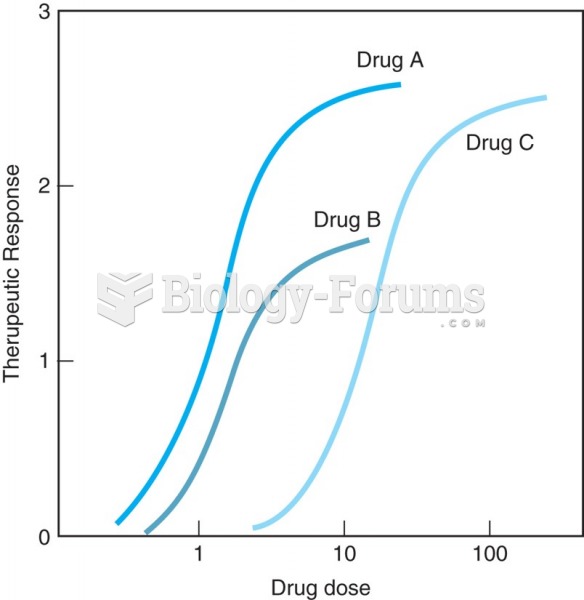|
|
|
According to the American College of Allergy, Asthma & Immunology, more than 50 million Americans have some kind of food allergy. Food allergies affect between 4 and 6% of children, and 4% of adults, according to the CDC. The most common food allergies include shellfish, peanuts, walnuts, fish, eggs, milk, and soy.
By definition, when a medication is administered intravenously, its bioavailability is 100%.
The people with the highest levels of LDL are Mexican American males and non-Hispanic black females.
A recent study has found that following a diet rich in berries may slow down the aging process of the brain. This diet apparently helps to keep dopamine levels much higher than are seen in normal individuals who do not eat berries as a regular part of their diet as they enter their later years.
On average, someone in the United States has a stroke about every 40 seconds. This is about 795,000 people per year.
 a) Avoid placing the face cradle too high because it hyperextends and strains the neck. b) When the ...
a) Avoid placing the face cradle too high because it hyperextends and strains the neck. b) When the ...
 Exchange of gases between lungs and blood. High concentration of CO2 in blood capillary entering the ...
Exchange of gases between lungs and blood. High concentration of CO2 in blood capillary entering the ...





